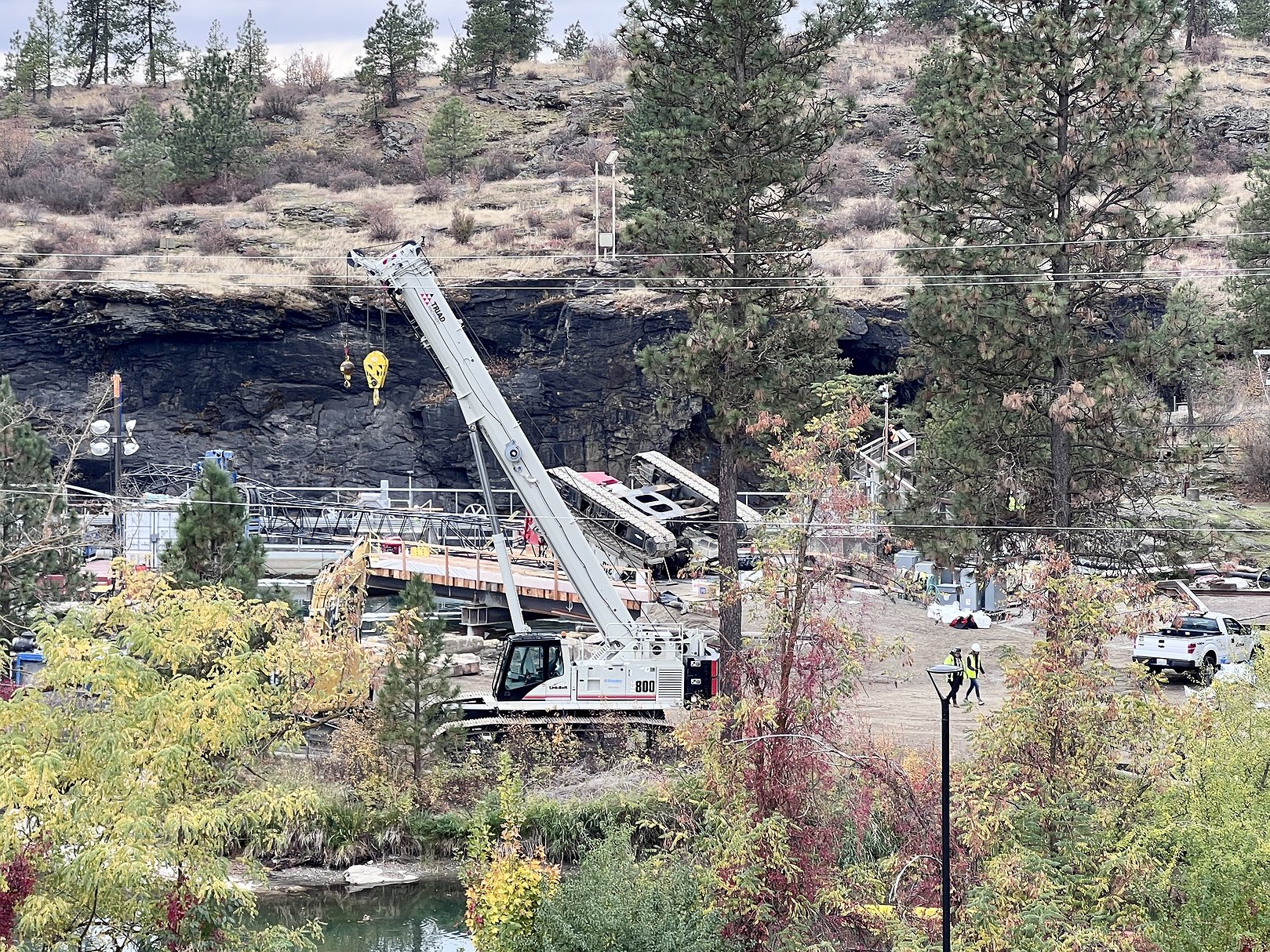Avista: Danger was minimal with dam mishap
CAROLYN BOSTICK | Hagadone News Network | UPDATED 6 months, 1 week AGO
Carolyn Bostick has worked for the Coeur d’Alene Press since June 2023. She covers Shoshone County and Coeur d'Alene. Carolyn previously worked in Utica, New York at the Observer-Dispatch for almost seven years before briefly working at The Inquirer and Mirror in Nantucket, Massachusetts. Since she moved to the Pacific Northwest from upstate New York in 2021, she's performed with the Spokane Shakespeare Society for three summers. | November 2, 2024 1:08 AM
POST FALLS — Officials from the National Weather Service and Avista Utilities re-examined their emergency response procedures Wednesday, following a crane failure at the Post Falls Dam the day before.
The NWS issued a flash flood watch at 9:57 a.m. Tuesday after the crane toppled and struck the dam. This was the only alert sent to wireless devices near the waterway. The watch was canceled at 10:38 a.m. after dam operators gave the all-clear.
Charlotte Dewey, warning coordination meteorologist at the NWS, explained that Post Falls Dam is one of about 20 dams under their supervision.
"We work closely with the dam and operators to know what to do when or if this happens," Dewey said. "Our role is to alert the public and partners about some of the impacts from that potential dam failure to lives and communities downstream."
The dam, owned by Avista Utilities, maintains emergency action plans at all its hydroelectric facilities. These plans are regularly tested through training scenarios with emergency response partners like the NWS.
Dewey noted that had the situation worsened, the response would have escalated. "If it moves to an imminent failure, or it's confirmed that it's actually failing, then we can issue a flash flood warning, saying there's an imminent risk to life and property, and that flooding will actually happen within a short frame of time," she said.
Jared Webley, Avista's communications manager, explained why the emergency plan was activated despite the ultimately minor nature of the incident.
"The words 'potential failure' could be scarier than they actually may be, as indicated yesterday. We had a 15-minute timeframe where we didn't exactly know the extent of the damage," Webley said. "Out of an abundance of caution, they (the NWS) chose to send that out and that's spelled out in the emergency action plan."
Three additional dams downstream from Post Falls would have helped regulate water flow if a failure had occurred. The dam, in service since 1906, was undergoing multi-year construction upgrades when the crane incident occurred.
ARTICLES BY CAROLYN BOSTICK

'Motherhood takes many shapes and forms'
Mother’s Day had come and gone and Whitney Wonderlich was left wishing and wanting to be a mother with dwindling hopes. “My husband and I had started to try and have kids and we weren’t able to,” she recalled.

'Motherhood takes many shapes and forms'
Mother’s Day had come and gone and Whitney Wonderlich was left wishing and wanting to be a mother with dwindling hopes. “My husband and I had started to try and have kids and we weren’t able to,” she recalled.

After 15 years, One Site for Seniors says farewell
Financial challenges too much for nonprofit to overcome
It was a hard farewell Friday at the One Site for Seniors building as guests, staff and extended “family members” of the agency faced an uncertain future of when they’ll all be in the same room again. The faith-based nonprofit was faced shuttered its door to resolve financial issues and potentially find a new way to return.



